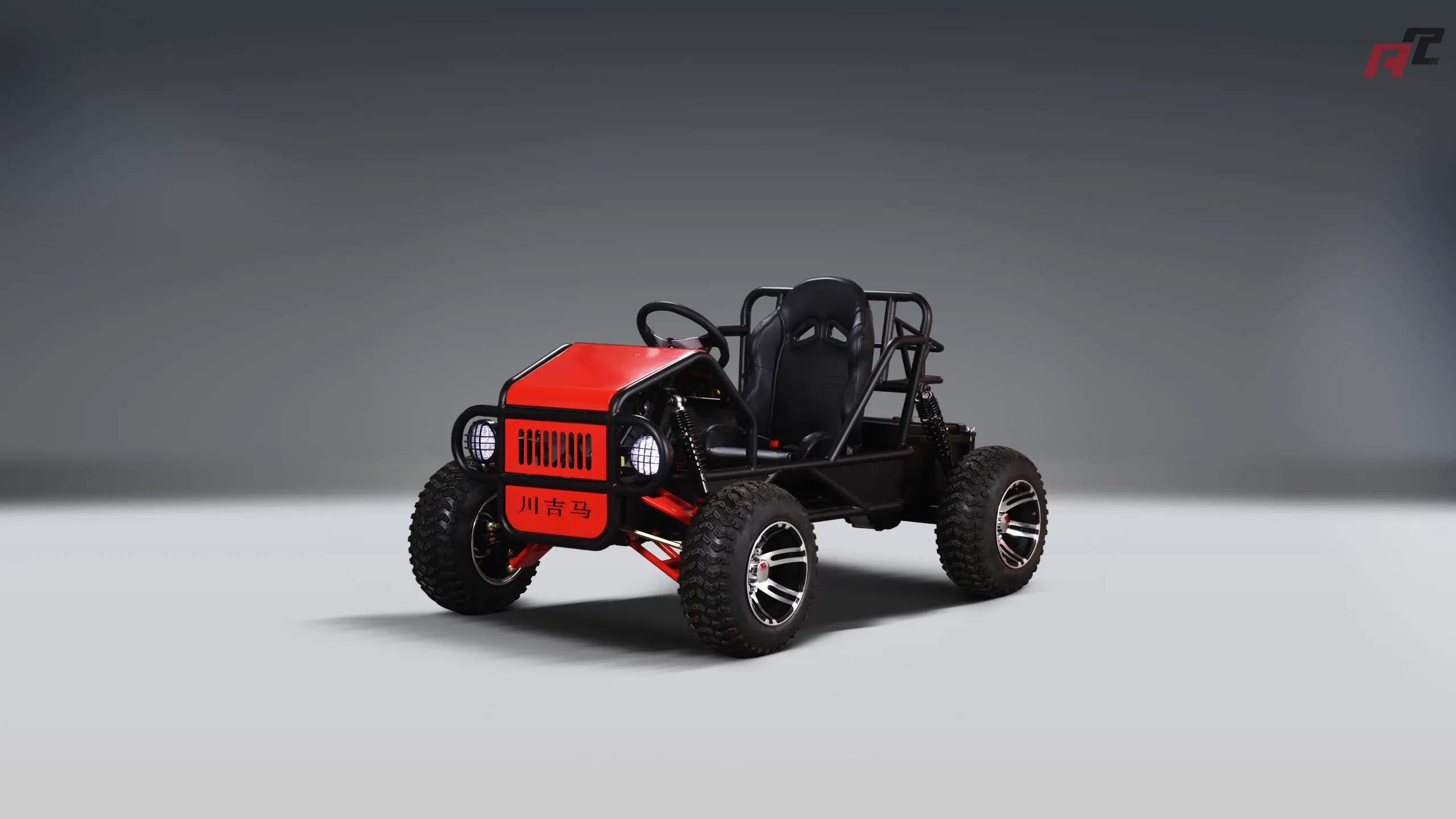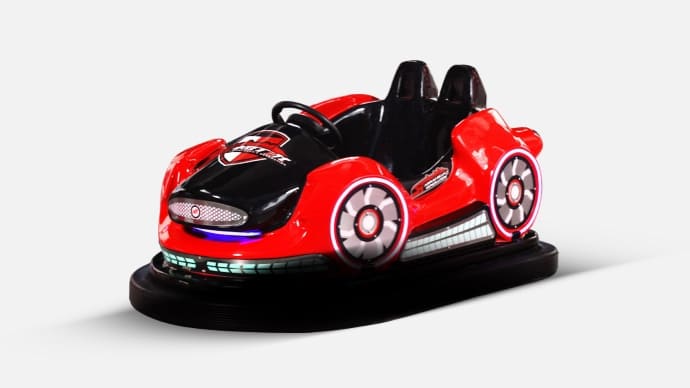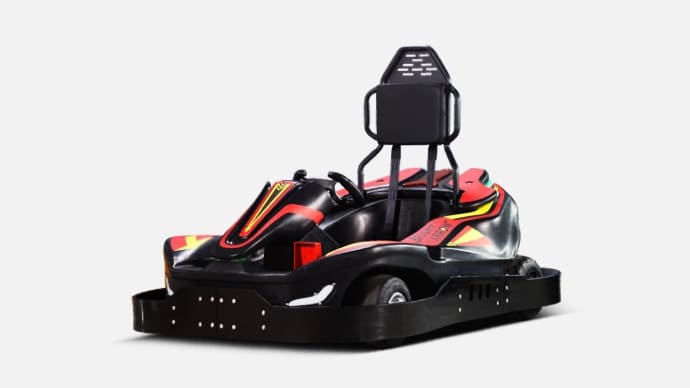Repair Tips: Common Battery Bumper Car Problems and Fixes
- Repair Tips: Common Battery Bumper Car Problems and Fixes
- Quick overview for operators
- How to approach diagnostics for a battery bumper car
- Start with safety and basic checks
- Common problem 1: Vehicle won't start
- Symptoms and quick checks
- Step-by-step fixes
- Common problem 2: Short runtime or rapid battery drain
- Why it happens
- Fixes and preventive measures
- Common problem 3: Charger not charging or charging slowly
- Diagnose charger faults
- Charger fixes
- Common problem 4: Intermittent power loss or stalling
- Typical causes
- Practical fixes
- Common problem 5: Overheating components
- Symptoms and causes
- Mitigation steps
- Common problem 6: Steering, brakes, or mechanical failures
- Electrical causes of mechanical symptoms
- Checks and repairs
- Battery technology comparison: SLA vs LiFePO4 for battery bumper cars
- Choosing the right battery type
- Routine maintenance schedule for battery bumper cars
- Daily
- Weekly
- Monthly
- Annually
- Tools and spare parts recommended for venues
- Essentials to keep on hand
- When to replace batteries and components
- Replacement triggers
- About ANCHI Amusement and support for your fleet
- Why choose professional manufacturer support
- Practical safety checklist before returning a car to service
- Final checks
- FAQ — Frequently asked questions about battery bumper car repairs
- Q1: How often should I replace batteries in a battery bumper car?
- Q2: Can I replace SLA batteries with LiFePO4 in existing cars?
- Q3: What routine checks prevent most downtime?
- Q4: Is DIY repair safe for electrical components?
- Q5: What are the signs a charger is failing?
- Q6: How can I extend battery life without replacing chemistry?
- Q7: Who can I contact for parts and technical upgrades?
- Closing note
- Keep rides safe and profitable
Repair Tips: Common Battery Bumper Car Problems and Fixes
Quick overview for operators
Battery bumper car operators rely on dependable electrical systems to keep rides safe and profitable. This guide covers the most common battery bumper car problems—charging faults, short runtime, intermittent shutdowns, steering or motor issues—and gives practical fixes, preventive maintenance, and easy-to-follow diagnostics. The advice is aimed at venue technicians and owners who want fast troubleshooting steps and long-term reliability improvements.
How to approach diagnostics for a battery bumper car
Start with safety and basic checks
Always start any diagnostic with safety: remove keys if present, turn off power, wear insulated gloves when handling batteries, and isolate the vehicle from the charging system. A clear, repeatable checklist—visual inspection, battery voltage, charger output, fuses, connectors, and error codes—saves time and reduces mistakes.
Common problem 1: Vehicle won't start
Symptoms and quick checks
Symptoms include no dashboard lights, no motor noise, or the car being completely unresponsive. First check: battery terminal voltage, main fuse, battery isolation switch, and charger LED indicators. Many no-start issues are simple: blown fuse, disconnected terminal, or depleted battery.
Step-by-step fixes
1) Measure battery voltage at terminals with a multimeter. For a 24V system, a resting voltage below ~22V usually indicates deeper discharge. 2) Inspect and replace blown main fuses or circuit breakers with matching ratings. 3) Tighten and clean battery terminals—corrosion increases resistance. 4) Check the charger: confirm it outputs correct voltage by measuring at charger leads when connected to the battery. 5) Inspect wiring harness and key switches for loose connectors or burnt wires. If the controller shows error codes, consult the controller manual for code meanings.
Common problem 2: Short runtime or rapid battery drain
Why it happens
Short runtime can be caused by aged batteries, incorrect charging practices, parasitic loads, or high rolling resistance (underinflated tires). Regularly cycling deep-discharge lead-acid batteries shortens life; modern LiFePO4 alternatives offer longer cycle life and more usable capacity.
Fixes and preventive measures
1) Test battery capacity: perform a load test or use a battery analyzer to check amp-hour capacity. 2) Verify charger profile matches battery chemistry—SLA chargers differ from LiFePO4 chargers. 3) Inspect for parasitic draws: lights, audio systems, or faulty relays may draw current when vehicle is idle. 4) Reduce rolling resistance: check tire pressure and wheel bearings. 5) Replace aged batteries if they fail capacity tests.
Common problem 3: Charger not charging or charging slowly
Diagnose charger faults
Check charger LEDs and error codes, measure charger output voltage with the battery disconnected, and inspect charger cabling for damage. Many chargers will go into a protection mode if they detect a shorted cell, reversed polarity, or over-temperature.
Charger fixes
1) Confirm AC input to charger (mains voltage) is correct and stable. 2) Check fuse or breaker on charger circuit. 3) Measure DC output: a healthy charger should provide the appropriate float/absorption voltage. 4) Replace charger if internal components fail—repair only if qualified. 5) Use correct charger for battery type: charging an SLA with a LiFePO4 profile can damage either the charger or battery.
Common problem 4: Intermittent power loss or stalling
Typical causes
Intermittent shutdowns often come from loose connections, overheating motor controllers, weak battery connections, or failing battery management systems (BMS). Vibration in amusement rides can loosen terminals over time.
Practical fixes
1) Inspect and tighten all high-current connections. 2) Check grounding and battery strap mounts—vibration can cause breaking or poor contact. 3) Monitor controller temperature under load; excessive heat may indicate overloaded components or poor ventilation. 4) Where fitted, read BMS logs for cell imbalance or protection events. Replace or recalibrate the BMS if it triggers incorrectly.
Common problem 5: Overheating components
Symptoms and causes
Overheating can appear as melted insulation, discoloration, or thermal shutdowns. Causes include overloaded motors, undersized wiring, blocked ventilation on controllers, or continuous high-current operation beyond design limits.
Mitigation steps
1) Ensure wiring gauges are appropriate for current loads. 2) Clean vents and cooling fins on controllers and motors. 3) Replace damaged insulation and use heat-resistant sleeving on high-current leads. 4) If the motor is overheating, check wheel alignment and brake drag which increases load. 5) Consider upgrading components (controller or wiring) if repeated overheating occurs.
Common problem 6: Steering, brakes, or mechanical failures
Electrical causes of mechanical symptoms
Loss of steering responsiveness can be mechanical, but electrical faults—like a failing power steering motor or controller—produce similar symptoms. Brakes that behave oddly may be related to regenerative systems or wiring to brake sensors.
Checks and repairs
1) Inspect linkages, bearings, and steering column for wear. 2) Test any electric assist units individually. 3) Check brake sensor switches and wiring for continuity. 4) Lubricate moving parts and replace worn bushings. Regular mechanical inspections prevent many electrical loads caused by friction or binding.
Battery technology comparison: SLA vs LiFePO4 for battery bumper cars
Choosing the right battery type
Many traditional battery bumper cars use sealed lead-acid (SLA) batteries due to lower initial cost and simplicity. However, LiFePO4 (lithium iron phosphate) is increasingly popular for its longer life, lighter weight, and deeper usable capacity. Below is a concise comparison to help venue owners decide.
| Metric | Sealed Lead-Acid (SLA) | LiFePO4 (Lithium Iron Phosphate) |
|---|---|---|
| Typical cycle life | 300–500 cycles | 2,000–5,000 cycles |
| Usable capacity (DoD) | ~50% recommended | ~80–100% usable |
| Energy density | 30–50 Wh/kg | 90–160 Wh/kg |
| Weight | Heavier per kWh | ~60% lighter per kWh |
| Charging | Simple SLA charger profiles | Requires LiFePO4-compatible charger/BMS |
| Maintenance & lifespan cost | Lower upfront, higher replacement frequency | Higher upfront, lower total lifecycle cost |
Routine maintenance schedule for battery bumper cars
Daily
Check battery charger status, ensure connectors are secure, inspect for visible damage, and verify tires and steering are operational. Charge batteries fully after the shift according to manufacturer instructions.
Weekly
Clean battery terminals, check electrolyte levels if using flooded cells (rare in sealed amusement setups), perform a visual inspection of wiring harnesses, and run a brief load test on a random vehicle to verify runtime.
Monthly
Perform a full voltage and specific gravity test where applicable, test charger output under load, and inspect motor brushes (if brushed motors are used) for wear. Record all data in a maintenance log to track degradation patterns.
Annually
Replace batteries that show significant capacity loss, recalibrate the BMS, inspect and possibly replace high-current cables, and consider upgrading to LiFePO4 if your fleet cycle costs justify the investment.
Tools and spare parts recommended for venues
Essentials to keep on hand
Multimeter, clamp ammeter, battery load tester, insulated hand tools, replacement fuses and breakers, spare connectors and heavy-gauge cables, a basic charger compatible with your battery chemistry, and a thermal camera or infrared thermometer for checking hotspots. Keep at least one spare battery per several cars to avoid downtime.
When to replace batteries and components
Replacement triggers
Replace batteries when capacity falls below 70% of rated amp-hours or when cycle count approaches the expected life. Replace controllers or motors if they overheat repeatedly, show audible signs of internal failure, or produce fault codes that persist after resetting and wiring checks.
About ANCHI Amusement and support for your fleet
Why choose professional manufacturer support
ANCHI Amusement is a leading manufacturer of amusement equipment in China, specializing in bumper cars, go-karts, and electric amusement vehicles. With over 5,000 square meters of production space and a skilled technical team, ANCHI offers reliable equipment and after-sales support including custom vehicle configurations and venue design. For operators seeking conversion to LiFePO4 systems, charger and BMS integration, or spare parts, ANCHI provides technical consultation and aftermarket service to reduce downtime and extend fleet life. Visit https://www.anchiamusement.com/ for product details and service options.
Practical safety checklist before returning a car to service
Final checks
1) Verify battery voltage and secure connections. 2) Confirm no error codes and controllers operate normally. 3) Test drive at low speed to confirm steering, braking, and power delivery. 4) Ensure all safety labels and restraints are intact. 5) Record results in your maintenance log and tag the car with last-service date.
FAQ — Frequently asked questions about battery bumper car repairs
Q1: How often should I replace batteries in a battery bumper car?
A1: For SLA batteries expect replacement roughly every 1–3 years depending on usage and charging discipline. LiFePO4 can last 5–8+ years under similar usage. Monitor capacity and cycle count to decide replacements.
Q2: Can I replace SLA batteries with LiFePO4 in existing cars?
A2: Yes, but you must ensure the charger and BMS are compatible and sometimes adjust mounting, wiring, and fuses. Consult your vehicle manufacturer or a qualified technician for conversions.
Q3: What routine checks prevent most downtime?
A3: Daily visual checks, nightly charging with correct chargers, weekly terminal cleaning, monthly load tests, and keeping a small stock of spare fuses and connectors prevent most unexpected downtime.
Q4: Is DIY repair safe for electrical components?
A4: Basic inspections and non-invasive checks are safe for trained staff. High-current work, battery pack repairs, or controller repairs should be done by qualified technicians due to electrical and chemical hazards.
Q5: What are the signs a charger is failing?
A5: Signs include no output, inconsistent charging, prolonged charge times, charger overheating, or charger LEDs indicating faults. Always verify AC input and output voltage before replacing a charger.
Q6: How can I extend battery life without replacing chemistry?
A6: Keep batteries fully charged after use, avoid deep discharges, store at moderate temperatures (around 15–25°C), use correct charging profiles, and minimize parasitic drains during storage.
Q7: Who can I contact for parts and technical upgrades?
A7: For parts, system upgrades, and venue-level consulting, contact ANCHI Amusement via their website https://www.anchiamusement.com/ for official spare parts, conversion kits, and support from experienced technicians.
Closing note
Keep rides safe and profitable
Reliable battery bumper car operations are the result of systematic maintenance, correct charging practices, and timely component replacement. Use this guide as a living reference: log issues, measure trends, and partner with experienced suppliers like ANCHI Amusement to keep your fleet running safely and efficiently.
Custom kids electric go kart Manufacturers and suppliers in China
Wholesale electric go kart high speed manufacturer and supplier
Wholesale kidzone bumper car manufacturer and supplier
Custom electric go kart for kids Manufacturers and suppliers in China
About Cooperation Process
What support can I get during the cooperation?
During the cooperation period, we will provide you with professional technical support, marketing suggestions and timely after-sales service.
How to sign a cooperation agreement?
We will provide you with a draft cooperation agreement, which will be signed by both parties after confirmation to ensure the legality and standardization of the cooperation process.
About Customized Service
Can you provide personalized customization services?
Yes, we can provide personalized customized services according to your needs and requirements, including colors, sounds effects, product specifications, packaging and private labeling, etc.
What customization options do you offer for your amusement ride equipment?
We offer extensive customization options including design themes, colors, sizes, seating configurations, safety features, and technological integrations. Clients can personalize every aspect of their ride equipment to suit their venue’s theme, target audience, and operational requirements.
Are there any additional charges for customized services?
Customized services may be subject to appropriate customization fees based on your specific requirements, which can be negotiated with our sales team.

Cyclone RS 2025 1200W Electric Go-kart for Home Entertainment Centers
The Cyclone RS 2025 is a high-performance electric ride-on car designed for thrill-seekers, entertainment centers, and commercial amusement businesses. Built with a durable ABS body and reinforced metal chassis, it combines strength, safety, and speed for a superior driving experience. With a 1200W mid-mounted motor (peaking at 3600W), advanced control system, and long-lasting 72V20AH LiFePO₄ battery, this ride ensures both powerful performance and reliability.
Whether for amusement parks, game zones, rental businesses, or personal recreational use, the Cyclone RS 2025 delivers unmatched excitement and durability.

Kids Electric Off Roads One-seater ATV
Discover adventure with the ANCHI Kids Electric One-seater ATV, the perfect electric off-road experience for young explorers. Designed for safety and performance, this electric off-road go kart for kids offers unmatched thrills on any terrain. Its durable build and easy-to-use controls ensure a fun and safe ride. Ideal for budding adventurers, this ATV promises endless excitement. Explore the world with confidence with ANCHI’s innovative electric off-road solutions for kids.

Battery Drift Bumper Car With inflatable tyre
The Battery Drift Bumper Car with Inflatable Tire with 650W steel gear motor, and high quality battery wich can becharged outside the car, the bumper car is ideal for amusement parks, family entertainment centers, build quality for safe, long-lasting fun.

Spaceship Laser Battle Bumper Car
Discover the future of fun with the ANCHI Spaceship Laser Battle Bumper Car! Designed for thrill-seekers, this kids bumper car offers an exhilarating laser battle experience. Parents and children alike will enjoy hours of safe, exciting play. Ideal for parties or everyday fun, it combines durability with innovative technology.










